The Greater Masai Mara
A MASAI MARA SAFARI
The Masai Mara offers breathtaking panoramic vistas, wide-open plains, an authentic safari destination, and you will not find a greater abundance of wildlife anywhere else in Africa. Witness over a million wildebeests and zebra litter the plains of the Masai Mara from July or August to October when the Great Wildebeest Migration enters Kenya. The Masai Mara is Kenya’s premier safari destination, located in the southwest of the country and bordering Tanzania’s vast Serengeti National Park.
The Masai Mara is a photographic safari paradise with fantastic, easy-to-spot wildlife spread through the open savannah plains. Expect to see incredible big cat sightings with impressive lion prides, coalitions of cheetah up to five strong, and leopards making frequent appearances. Elephants, hippos, crocodiles, plains game like impala, topi, giraffe, zebra, other herbivores, and endangered black rhino, who, like the predators, can all be seen throughout the year.
WHY GO ON A MASAI MARA SAFARI?
Perfect for first-time safari-goers, seasoned safari lovers, romantic getaways and family fun holidays, the Masai Mara delivers many attractions. Game viewing, if we have not said already, is fantastic and available all year through. The Wildebeest Migration is a spectacle we should all witness at least once in our life and you can interact and learn about the custodians of the land, the Maasai people.
Kenya is very easy to get to from anywhere in the world and offers a world-class vacation experience. Combine Bush and Beach or extend to the Serengeti, Victoria Falls and South Africa.
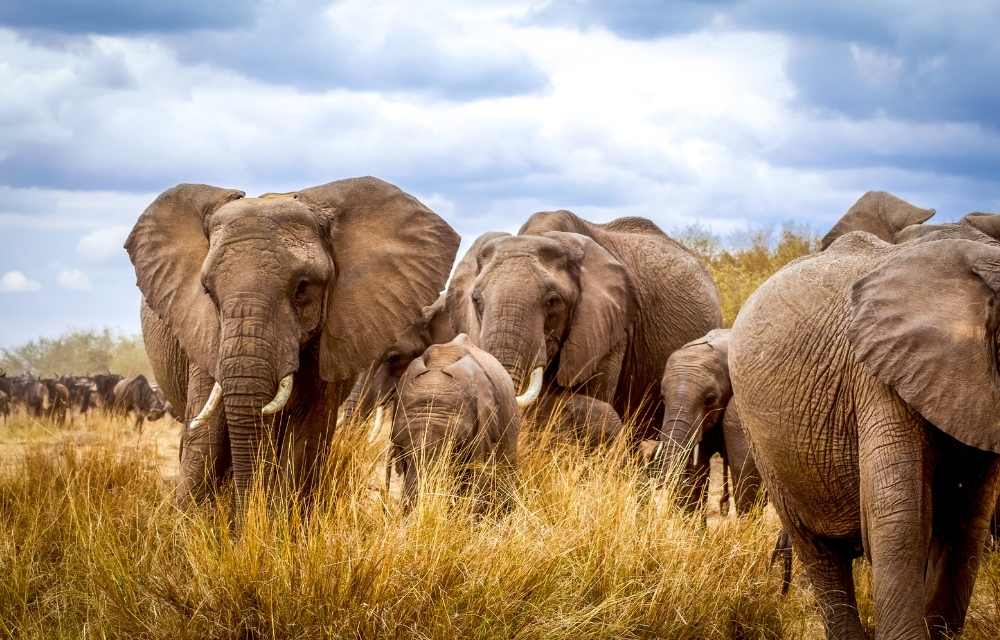
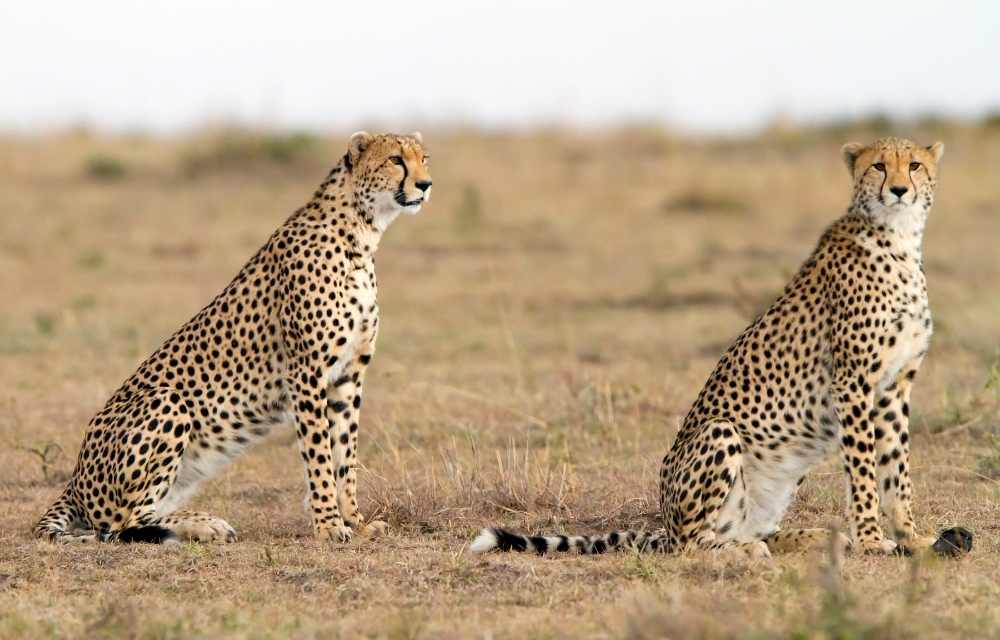
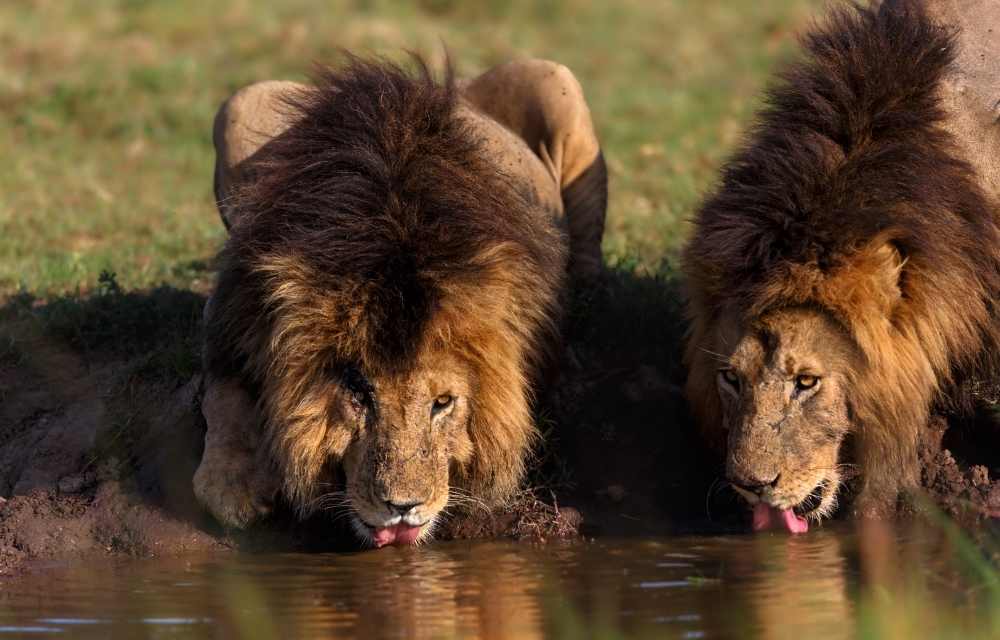
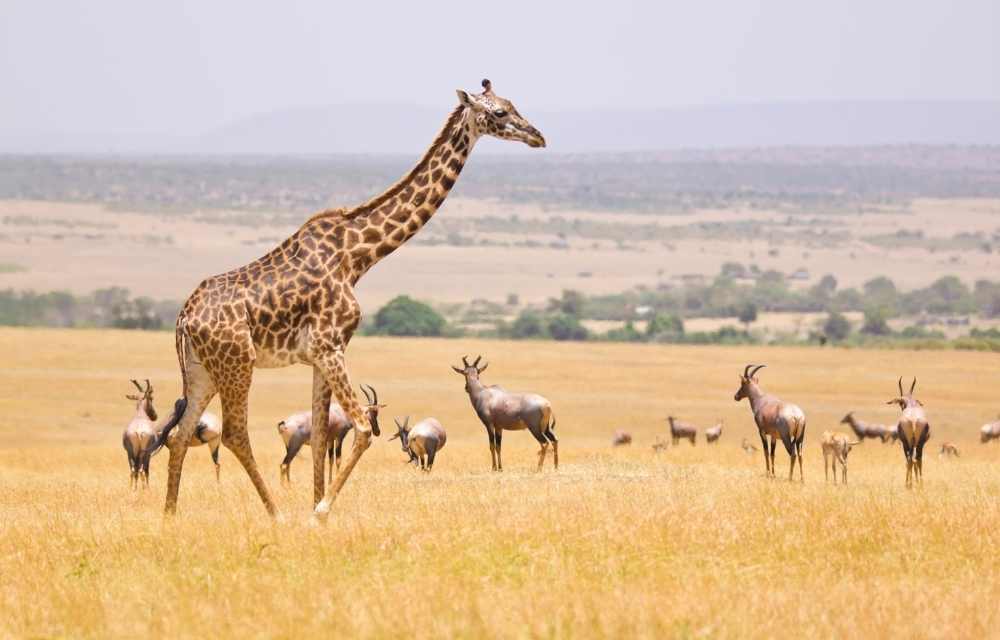
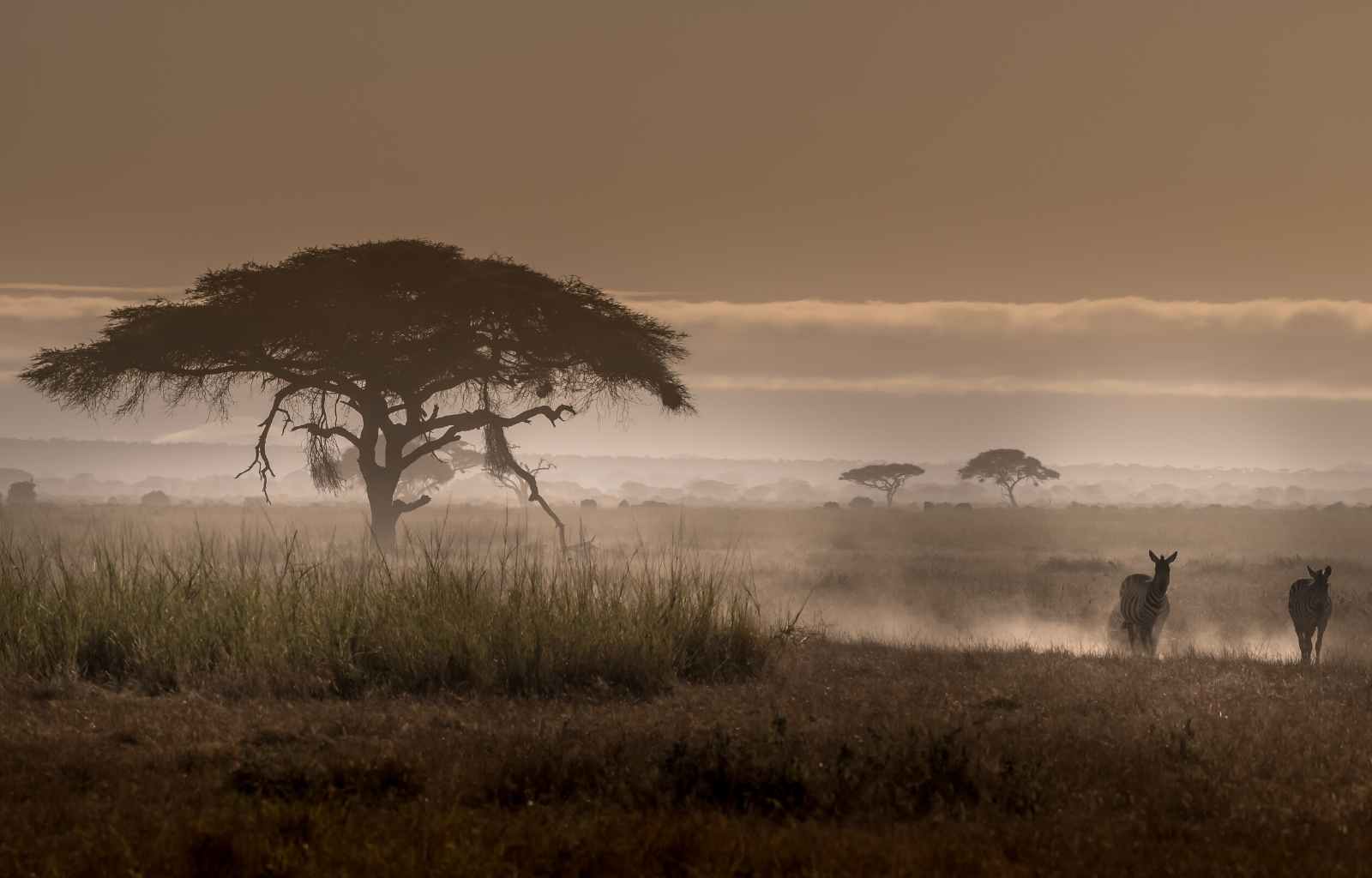
Top Tip: Book early for the Wildebeest Migration! If you want front-row seats you should book your Masai Mara Safari at least a year in advance.
WITNESS THE GREAT WILDEBEEST MIGRATION IN THE MASAI MARA
The great wildebeest migration in the Masai Mara comes through the plains from late July through to October. The vast herds of migrating wildebeest and zebra can arrive early or late, stay for a while, or months, it all depends on the rainfall. While there is no set arrival date you can generally start to see the front runners from the beginning of July. By August the herds have crossed over the Serengeti border into the Masai Mara and surrounding conservancies, numbering over a million animals.
By October the herds have started south again, over the Mara River and into the Northern Serengeti. They continue south to the Ndutu Plains in the Serengeti to calve in February, before starting their journey north. And so the cycle continues. If you are lucky, you will see a dramatic river crossing.
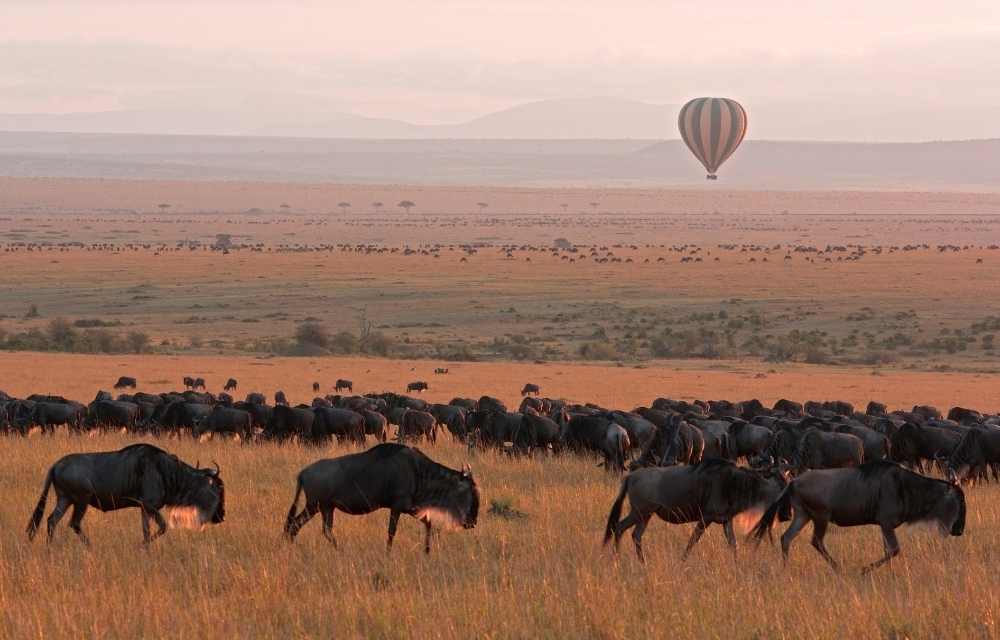
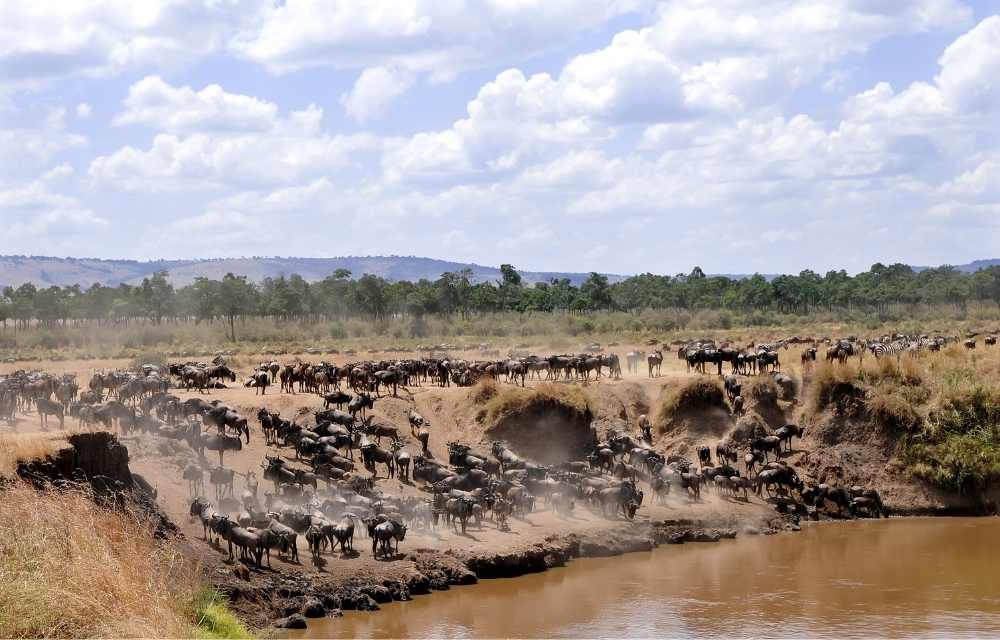
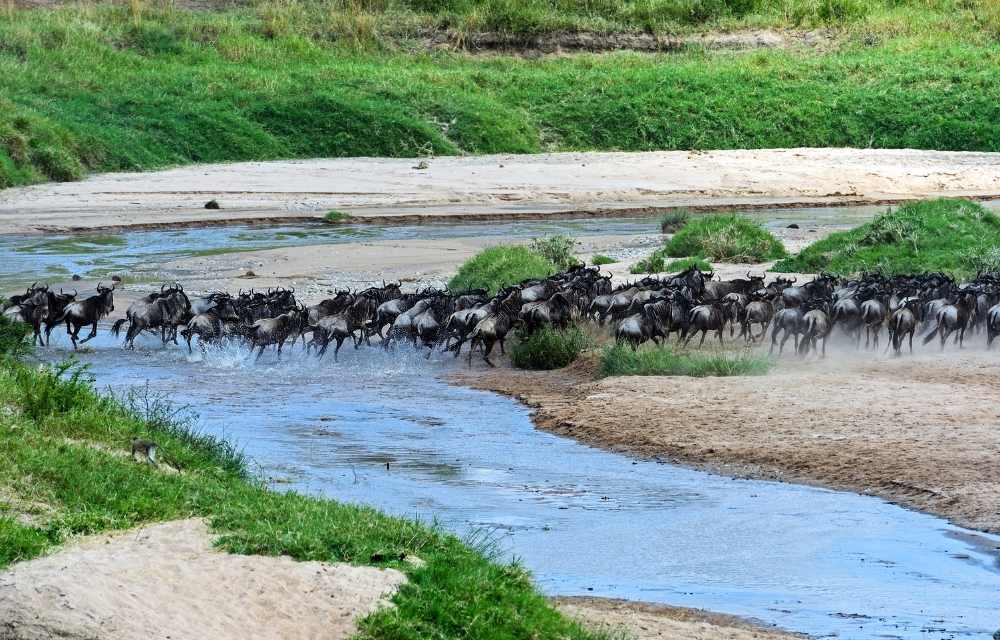
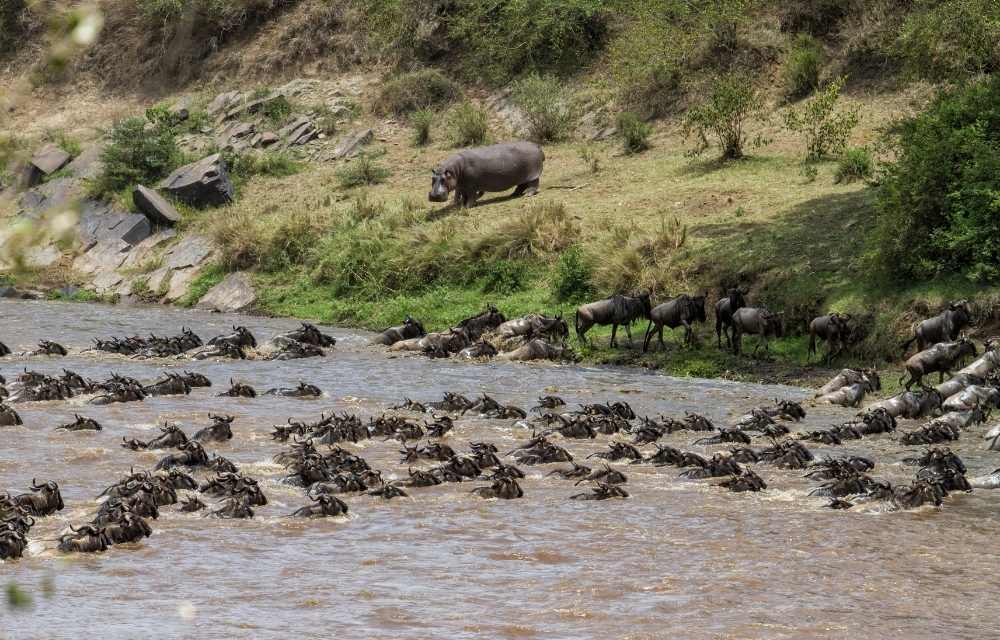
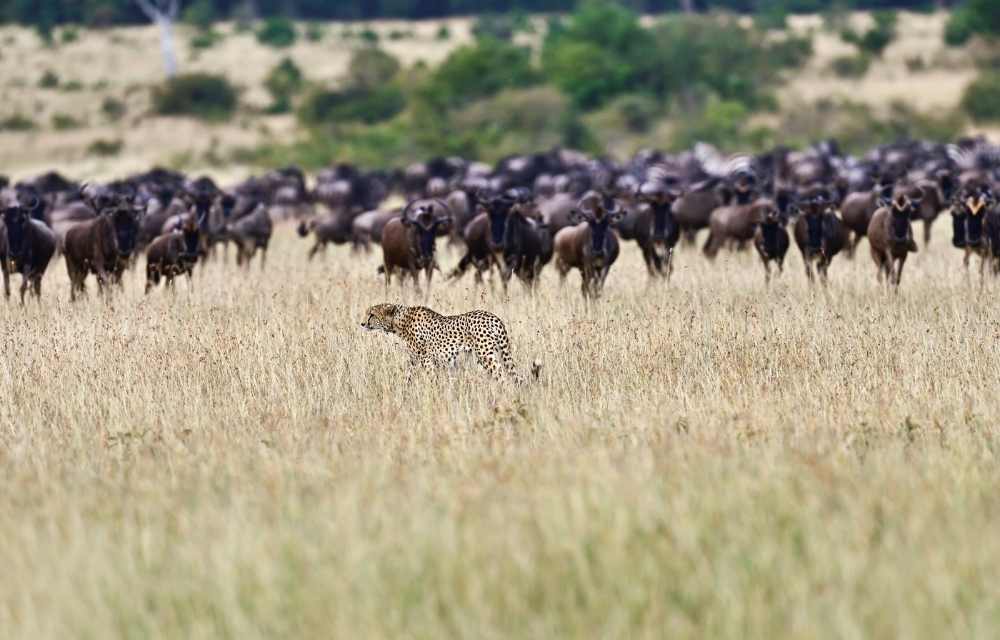
Read More: Masai Mara Travel Guide
KENYA SAFARI COMBINATIONS
A quick visit to the Mara for 2 or 3 nights is great for those already in the country. Longer safaris are planned for those who are coming for one reason only, to see the wild animals and big cats! You could spend 6 -8 nights at 2 very different parts of the greater Masai Mara. The most popular Kenya Safari area are listed here.
Great combinations include the Amboseli National Park or Samburu National Park with the Masai Mara. Visit some of the last remaining black and white rhino in the Laikipia region, home to a vast array of private reserves that offer an incredible safari experience. Go flamingo searching in the Great Lakes of Kenya like Lake Nakuru and Lake Naivasha or stay in the middle of Nairobi in the Nairobi National Park. A Bush and Beach safari combo is also very popular.
MEET THE MAASAI PEOPLE
Your Masai Mara safari gives you many opportunities to interact with a semi-nomadic ethnic group of Kenya, the Maasai. An increase in safari tourism in Kenya has provided numerous opportunities for Maasai to work in the industry, learning to become top-rated safari guides, camp managers, and general staff. The private conservancy model has allowed the surrounding villages to become landowners in the safari tourism space, by leasing land to lodges.
While on your safari in the Masai Mara you can visit a local village to experience the traditional Maasai culture and learn how the safari lodge you are staying in gives back to the local communities.
THE MASAI MARA PRIVATE CONSERVANCY
Former Masai land that used to be used for cattle grazing has been leased to the safari tourism industry, to create wildlife conservancies along the borders of the Masai Mara National Reserve. Fences have been dropped and land rehabilitated to conserve the wildlife of the Greater Masai Mara ecosystem.
A Masai Mara safari to a private conservancy ensures that you are one of a limited number of guests allowed in as numbers are strictly controlled. Unless you are staying in a safari lodge in that conservancy, you cannot go on game drives on the land. Activities within the Masai Mara Conservancies are far more varied than just the driving allowed in the national reserve. Enjoy and an immersive bushwalk and go on a night drive. Bush breakfasts, lunches, and dinners are allowed out in the wilds and a few camps offer mountain biking trips.
Safari lodges are smaller and more intimate, adhering to the restrictions of people per square kilometre. Staying in a lodge in a conservancy gives you the option to drive into the main Masai Mara National Reserve, however these are seldom required as the game viewing excellent no matter where you stay. Drives in the reserve do take place during the wildebeest migration season when the hopes of the herds crossing the Mara River require you to drive a bit further afield.
There are 15 conservancies in the Greater Masai Mara, covering roughly the same size of area as the Masai Mara National Reserve. Various tourism partners and international investors have come together to work with the local communities, by purchasing long-term leases on land, and providing training, education, and village support. Currently, there are plots of land from over 15000 landowners in the Masai Mara Conservancies model, who all receive a monthly income from the lease of their land. Guides are employed from the local communities along with managers and other camp staff. Some safari lodges employ over 90% of their staff from the community who leased their land to the lodge.
“You know you are truly alive when you’re living among lions.” ~ Karen Blixen
